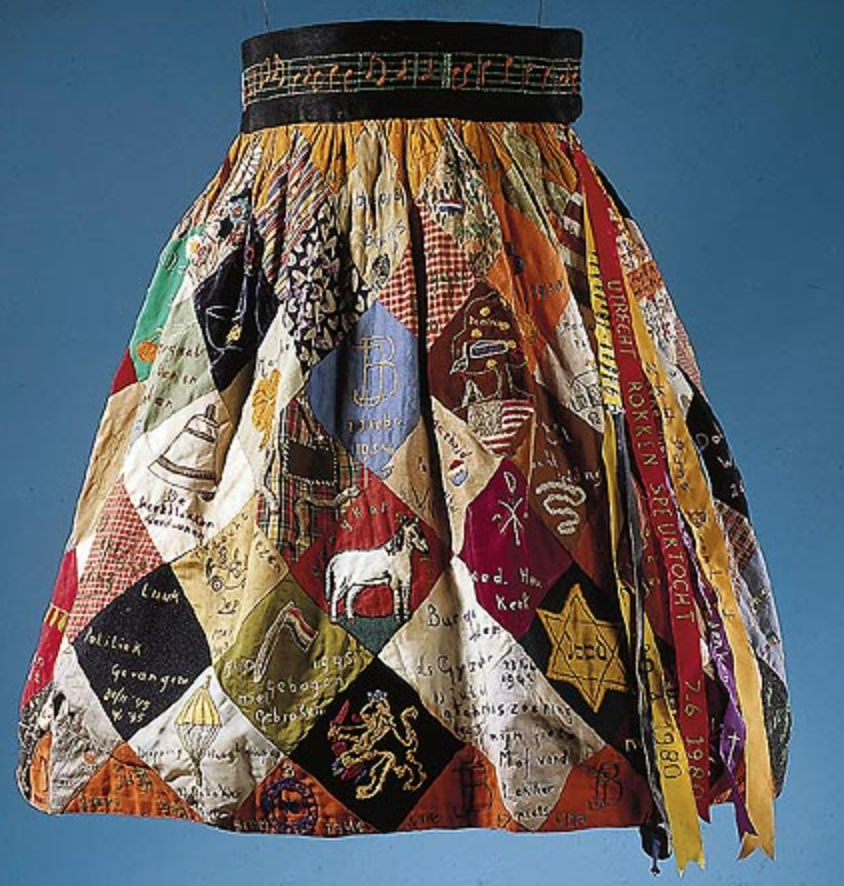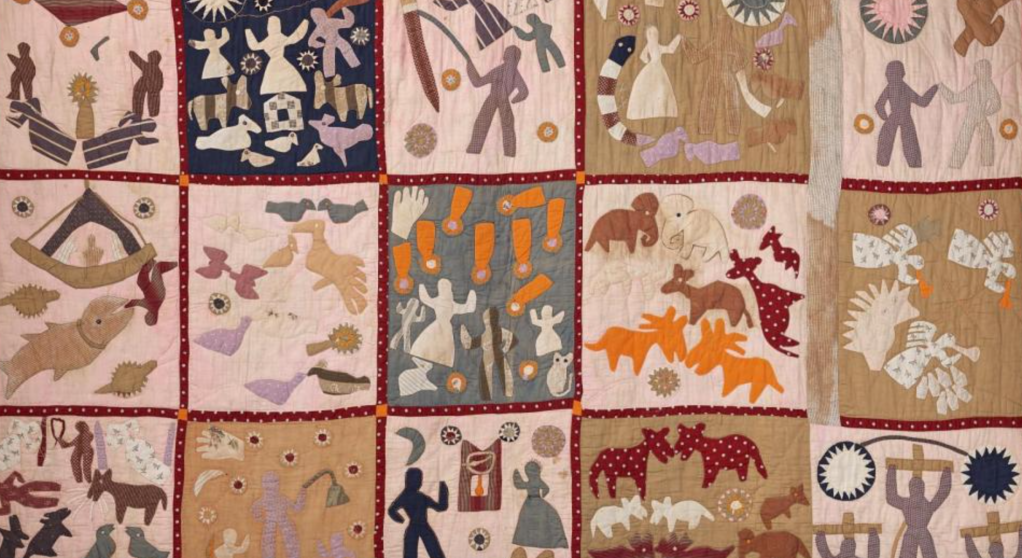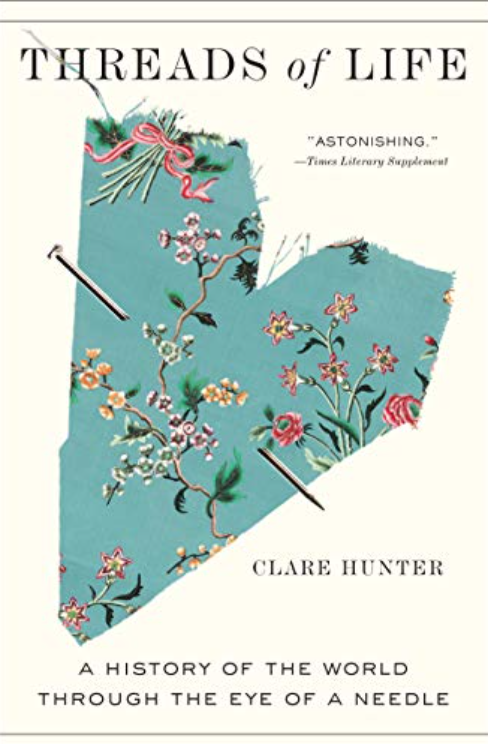I was gifted Threads of Life by Clare Hunter for Christmas this year. The book is a testament to needlework and those who have used their sewing super power to create change. Clare Hunter draws on her experiences as a community artist and banner maker to share stories that span centuries and continents. Each chapter highlights a different theme surrounding the power of needlework – power, captivity, connection, identity, community, place. In each chapter she shares multiple stories of individuals and groups using needlework to unite themselves, connect with others, make a statement, or mourn loss. Her prose illuminates the embroidery, sewing, and applique, providing just enough detail to captivate you as she fluidly draws on her own experiences and research.
I have to admit I am not much of a non-fiction reader. Most of my days are spent reading academic papers and non-fiction, so at night when I want to curl up with a book it is usually fiction, and light reading at that. For this reason I was hesitant when I received this book, unsure if I would enjoy it. While I primarily sew on a machine, I never really had an interest in historical sewing and needlework. The stories that she shares have truly inspired me to take up hand sewing and embroidery. I am not weighed down by the history of it all either – a state I usually find myself in when trying to read historical non-fiction. I highly recommend this for anyway that does needlework and has a sense of curiosity for the stories of others.
She writes of beautiful, tireless work done by individuals throughout time that have become passed through generations and used to enact change. She describes the connections we make with textiles:
The textiles we keep demand to be lifted, stroked, handled. They literally keep us in touch with our past. Cloth softens with handling. It absorbs human touch and the drift of odours that surround it during its making: sweat, spices, perfume, wood smoke. Bury your face in a textile and you can nose up the scents of lives far away and long ago. If it is an heirloom, it can transport you to a forgotten blend of family fragrance.
Clare Hunter, Threads of Life, p. 85
In the end, Hunter share some links to resources to look at some of the images she describes. These images are also shared on her site as well. I follow with some images of needlework described in her book that really captivated me.
Embroidery of John Craske
I did not realize the capacity of embroidery to show dine detail, shading, and color until Hunter described the work of John Craske.

Mary Queen of Scots
Mary Queen of Scots was an extraordinary needleworker, who during her captivity spent her time doing many embroider works, such as the one below.
Skirt of Life
The Liberation skirt was a symbol of unity and diversity in the Netherlands following WWII, after Adrienne Minette (Mies) Boissevain-Van Lennep created a patchwork skirt from old cloth while held in prison during the Dutch resistance.

Miao story cloth
The Miao people of China create intricate embroidered works of ancient myths, with talismans of animals to protect against evil spirits.

Suffragette banners
During the suffrage movement in the early 1900s, embroidered banners were created during protests. Many of the banners were designed and inspired by Mary Lowndes simple designs.

Harriet Powers’ Pictorial Quilt
Quilts and embroideries of this nature truly amazed me in the book. Hunter describes individuals putting their life stories and experiences into their needlework to tell a story. These pieces can last through time, providing accounts of lives previously unknown. Harriet Powers, an African American woman who was born a slave created this 15 piece quilt to tell her story. A description of the quilt can be found here.

Dinner Party
The Dinner Party was a piece of feminist art of the 1970s, created by Judy Chicago to remember important women from history. The settings are embroidered table runners intricately created to capture the individual women at each setting.


